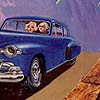The Tampa Airshow is March 31st and April 1st. Anyone want to arrange to get together then? It's a great opportunity... :)
I have yet to discover the association between these....>>>
http://en.wikipedia.org/wiki/Tampon...and aeroplanes.... :-?...?
Paul.... 8-)...!
(I use them as ear defenders on my motor-bike)...

...!
LOL- no connection. This should clear things up.
I SAID...
From the book "Florida Place Names" by Allen Morris (1974):
"As with so many names of Indian origin, traces of the name of this important Florida west coast city have a choice among three unrelated suggestions as to meaning. One is 'near it' or 'close to it,' another is 'split wood for quick fires,' and the third is a source in a fifteenth-century Spanish city. The 'near' presumably referred to the closeness of an Indian village to what is now Tampa Bay. The 'split wood' is said to have been used because of the quantities of driftwood found along the shore. The bay was first known as Espiritu Santo or 'Holy Spirit, and was entered in 1528 by Narvaez, who found the Indian village. Karl H. Grismer (1950), Tampa historian, says Hernando de Escalante Fontaneda, a Spanish lad of 13 when shipwrecked off the Florida coast in 1545, was responsible for preserving Tampa's ancient name. Friendly Indians gave Fontaneda hospitality and the opportunity to travel in the Florida peninsula for 17 years before he returned to Spain. He learned the languages of four tribes and compiled a list of 22 towns within the Caloosa territory of south Florida, ' and the name Tanpa [sic] led all the rest. He spelled the word with an n instead of an m. Contemporary writers and map makers who saw Fontaneda's Memoir apparently liked 'Tampa' better than 'Tanpa' and when they picked up the word and used it they gave an more euphonic spelling (Grismer 1950). Fontaneda did not give a meaning for the name. Dr. John R. Swanton of the Smithsonian Institution, an authority on the languages of the primitive (his word) Indians of the Southeastern United States, says there is little hope an authentic interpretation ever can be ascertained unless a Caloosa vocabulary is discovered. Present-day Tampa grew from Fort Brooke, named in the spring of 1824 for its commanding officer, Col. George Mercer Brooke. 'The farm and fishing village which grew up outside the military reservation also was called Fort Brooke but eventually was known by the Indian name of Tampa' (Dunn, 1972). Settlers objected to the military name and adopted the name Tampa Bay for their first post office in 1831. It was soon decided that the Bay could be dropped. The city is the county seat of Hillsborough County."[/i]
And here's another interesting bit... I drove down this road every day while I was there, and wondered:
For whom is Dale Mabry Highway named?
From: "Tampa, A Pictorial History" by Hampton Dunn
Capt. Dale Mabry was a World War I hero who died February 21, 1922. The Army Airship Roma that he was piloting, crashed and burned at Norfolk, Virginia. Dale Mabry Highway was built during World War II to connect MacDill and Drew airfields, and named in his honor.











 ...!
...!
...!


 ...!
...! ...?
...? ...
...  ...!
...!



 ...!
...!
...!
...?
...
...!







 ...
... ...
... ...!
...! ....
....  ...!
...!


